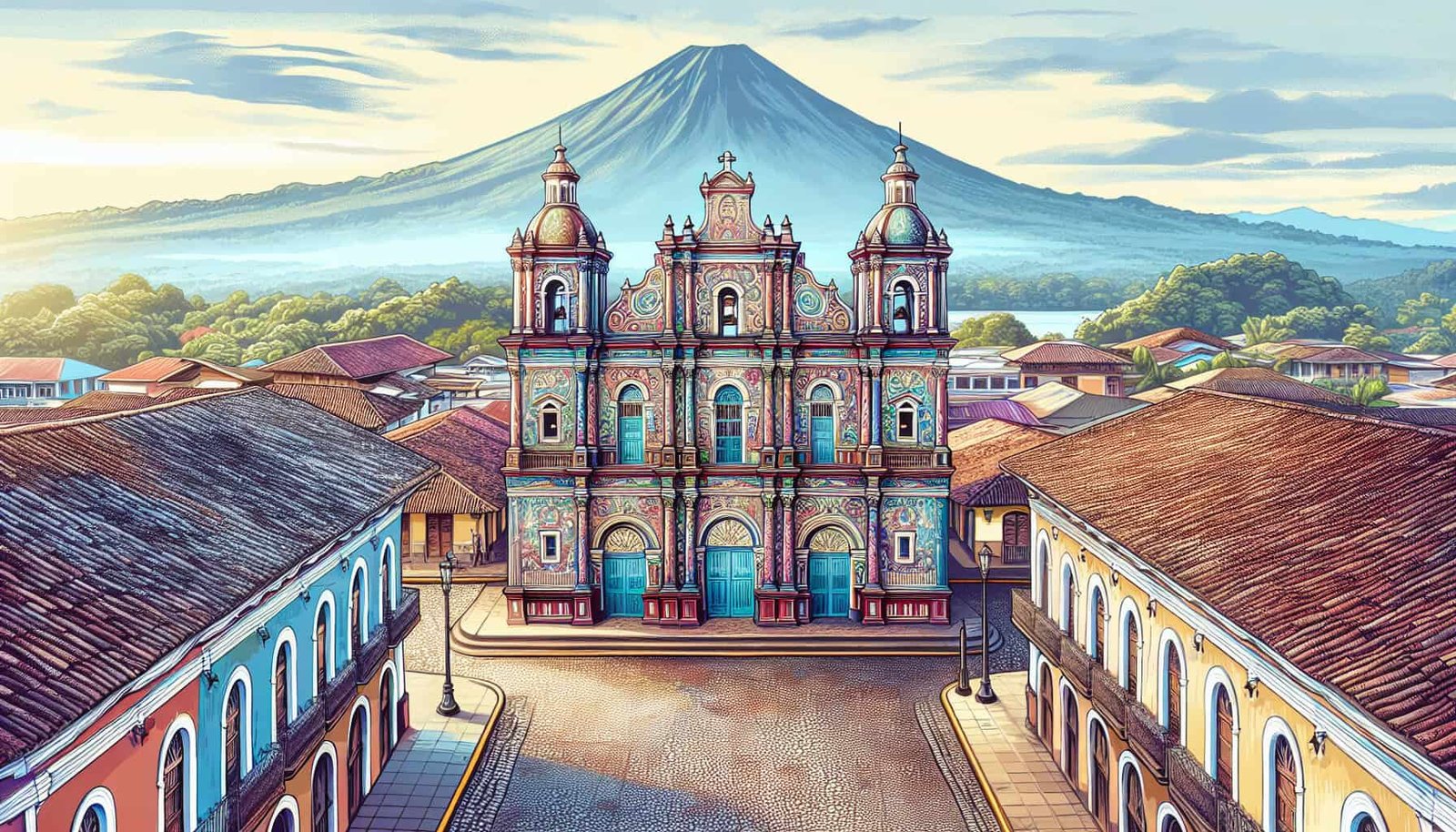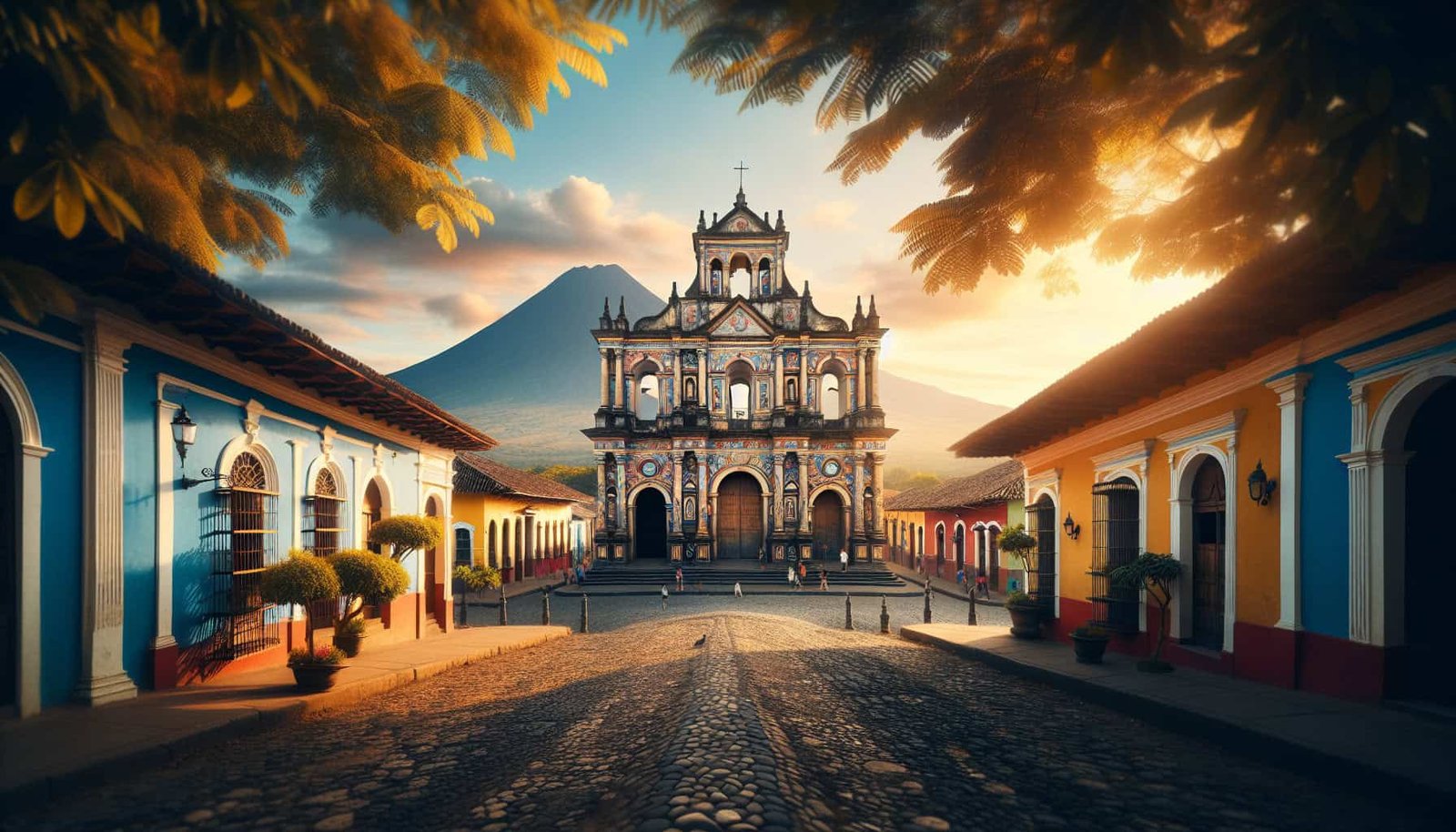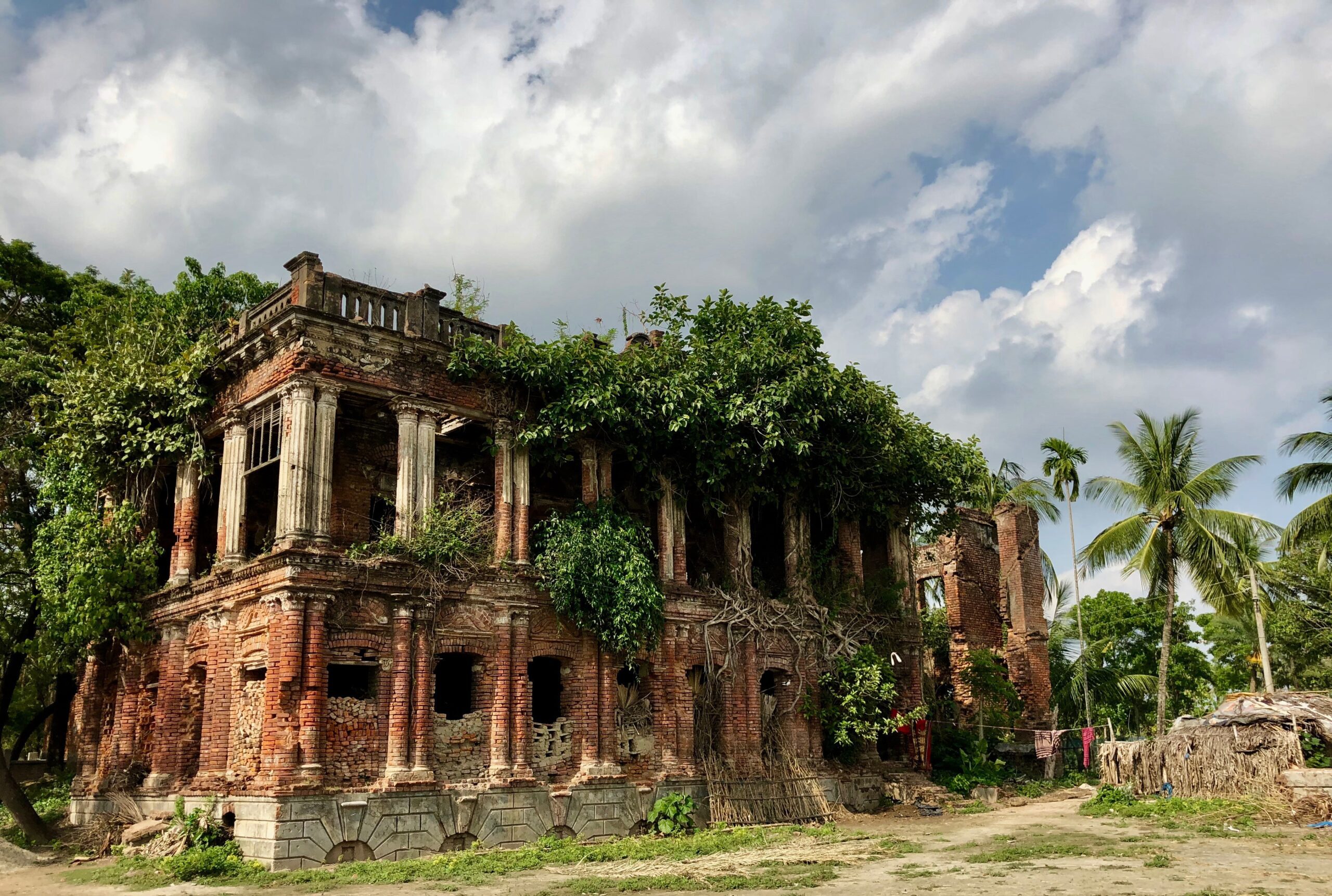Nicaragua, a captivating country in Central America, is home to an array of awe-inspiring historical sites and landmarks that paint a vivid picture of its rich cultural heritage. From centuries-old colonial towns to preserved ancient ruins, this vibrant destination offers an immersive experience for history enthusiasts. Join us on a virtual journey as we explore some of the top historical gems that Nicaragua has to offer, each holding its own unique story waiting to be discovered. So put on your explorer hat, grab a cup of coffee, and let’s embark on a captivating adventure through time. Nicaragua, located in Central America, is a country rich in history and cultural heritage. From ancient ruins to colonial cities, there are countless historical sites and landmarks that showcase the country’s vibrant past. In this article, we will take a closer look at some of the top historical sites and landmarks in different regions of Nicaragua. So grab your travel guide and get ready to explore the fascinating history that awaits you in this beautiful country.
León
León, the cultural capital of Nicaragua, is a city steeped in history and home to numerous historical sites and landmarks. One of the most iconic landmarks in León is the León Cathedral. Built in the 18th century, this magnificent cathedral is known for its stunning architecture and intricate details. Take a stroll inside and marvel at the grandeur of the interior, adorned with beautiful artwork and religious symbols.
Another must-visit site in León is the Rubén Darío Museum. Dedicated to the famous Nicaraguan poet, this museum offers a glimpse into the life and works of one of the most influential literary figures in Latin America. Explore the exhibits, which include manuscripts, personal belongings, and photographs, and gain a deeper understanding of the poet’s impact on Nicaraguan culture.
For history buffs, the Museo de la Revolución is a must-see attraction in León. This museum chronicles Nicaragua’s revolutionary past, showcasing artifacts, photographs, and documents from the Sandinista Revolution. Learn about the country’s struggle for independence and the social and political changes that shaped modern Nicaragua.
San Juan de Dios Church is another notable historical site in León. This colonial-era church boasts stunning architecture and serves as a testament to the city’s rich religious heritage. Step inside and soak in the tranquil atmosphere as you admire the beautiful artwork and ornate altars.
Last but not least, don’t miss the opportunity to visit León Viejo, a UNESCO World Heritage Site. Once the capital of Nicaragua, this ancient city was buried by volcanic ash in the 17th century and remained hidden until its rediscovery in the 20th century. Explore the archaeological site and marvel at the remarkably preserved ruins, providing a unique window into Nicaragua’s pre-Columbian history.
Granada
Next on our list is Granada, another colonial gem known for its well-preserved architecture and historical landmarks. The Granada Cathedral, also known as the Cathedral of Our Lady of the Assumption, is a prime example of Spanish colonial architecture. Built in the 16th century, this cathedral is the oldest in Central America and stands as a symbol of Granada’s rich religious history. Step inside and witness the grandeur of the interior, featuring stunning religious artwork and intricate details.
Adjacent to the cathedral, you’ll find the beautiful La Merced Church. This vibrant yellow church is known for its picturesque bell tower, offering panoramic views of Granada’s colorful streets and surrounding landscape. Explore the inside of the church and marvel at the ornate altars and religious artwork that adorn the walls.
For history enthusiasts, a visit to the Fortress of La Polvora is a must. This 18th-century fortress played a significant role in protecting Granada from pirate attacks during colonial times. Take a guided tour of the fortress and learn about its history and strategic importance. From the top of the fortress, you can enjoy breathtaking views of Lake Nicaragua and the surrounding area.
If you have a sweet tooth, a visit to Mansion de Chocolate is a must. This historic mansion-turned-chocolate museum offers a delightful experience for chocolate lovers. Learn about the history of chocolate production in Nicaragua, from its Mayan origins to the present day. Indulge in delicious chocolate samples and even participate in a chocolate-making workshop.
Lastly, make sure to stop by the Iglesia de Guadalupe, a charming yellow church located on a hill overlooking Granada. Climb to the top of the bell tower and take in the panoramic views of the city and Lake Nicaragua. This church is not only a historical landmark but also a symbol of faith and devotion for the locals.

Ometepe Island
Situated in Lake Nicaragua, Ometepe Island is a natural and cultural oasis that boasts a rich history dating back to pre-Columbian times. The island is home to several historical sites and landmarks that offer a glimpse into the past.
One of the most popular attractions on Ometepe Island is Ojo de Agua. This natural spring is believed to have healing properties and offers visitors the opportunity to relax and swim in its crystal-clear waters. Surround yourself with lush vegetation and enjoy a refreshing dip in this unique natural wonder.
For nature and history enthusiasts, a visit to Charco Verde Lagoon is a must. This tranquil lagoon is surrounded by a lush forest and offers hiking trails where you can spot a variety of wildlife, including monkeys and birds. The lagoon itself holds historical significance, as it is believed to be the burial place of an indigenous chief.
Delve into the island’s history by visiting the Museum El Ceibo. This small museum showcases artifacts and exhibitions that highlight the island’s pre-Columbian heritage. Learn about the indigenous cultures that once inhabited the island and gain a deeper understanding of their traditions and way of life.
No visit to Ometepe Island would be complete without a visit to the Altagracia Church. This stunning church, dedicated to the Virgin Mary, showcases a unique blend of indigenous and Catholic influences in its architecture and artwork. Step inside and admire the beautifully painted murals and religious icons that adorn the church.
Lastly, make sure to explore the ancient petroglyphs scattered throughout the island. These mysterious rock carvings provide a glimpse into the island’s ancient past and are believed to have been created by indigenous tribes. Take a guided tour to learn more about the significance of these petroglyphs and their role in Ometepe Island’s history.
Masaya
Located just outside of the capital city, Managua, Masaya is a region brimming with historical sites and landmarks that offer a unique glimpse into Nicaragua’s past.
For nature lovers and adventure seekers, a visit to the Masaya Volcano National Park is a must. As one of the most active volcanoes in the country, this park allows visitors to get up close to the volcanic activity. Take a guided hike up the volcano and witness the impressive lava lake, providing an awe-inspiring sight you won’t soon forget.
After exploring the volcano, make your way to the Masaya Handicraft Market, where you can immerse yourself in Nicaraguan culture and shop for traditional handicrafts. Browse through a wide array of products, including ceramics, textiles, and jewelry, all crafted by local artisans. Take home a unique souvenir to commemorate your visit.
While in Masaya, don’t miss the chance to explore the Masaya Old Market. This historic building, originally constructed in 1891, has served as a bustling market for over a century. Today, it has been restored and transformed into a vibrant cultural center, hosting various events and exhibitions. Explore the market and mingle with the locals as you browse through the stalls selling fresh produce, traditional food, and local handicrafts.
For those seeking a spiritual experience, a visit to La Asunción Church is a must. Known as the oldest church in Central America, it dates back to the 16th century and boasts beautiful architecture reflective of the Spanish colonial era. Step inside and admire the religious artwork, impressive altars, and ornate details that adorn this historical place of worship.
Before leaving Masaya, be sure to visit the Masaya Artisan Market, another must-see attraction. This bustling market is a haven for art lovers, showcasing a wide variety of handmade crafts and artwork from talented local artisans. From intricately woven baskets to vibrant paintings, there is something for everyone. Support local artists and take home a unique piece of Nicaraguan art to adorn your home.

Managua
As the capital city of Nicaragua, Managua is not only a bustling metropolis but also home to several historical sites and landmarks that showcase the country’s cultural heritage.
Start your historical journey in Managua by visiting the National Palace of Culture. This grand building is not only an architectural masterpiece but also houses several museums and galleries that showcase the country’s art, history, and culture. Take a guided tour and explore the exhibits, which include archaeological artifacts, artwork, and historical documents.
For theater enthusiasts, a visit to the Rubén Darío National Theater is a must. Named after the iconic Nicaraguan poet, this theater is a hub for performing arts and cultural events. Catch a live performance, ranging from theater plays to concerts, and immerse yourself in Nicaragua’s vibrant artistic scene.
To gain a deeper understanding of Nicaragua’s rich history, a visit to the National Museum of Nicaragua is a must. Explore the exhibits that showcase the country’s archaeological artifacts, colonial history, and revolutionary past. Learn about the indigenous tribes that once inhabited the region, the Spanish conquest, and the Sandinista Revolution. This museum offers a comprehensive overview of Nicaragua’s past and its impact on the present.
No visit to Managua is complete without experiencing the bustling markets that are a testament to the city’s vibrant culture. Roberto Huembes Market is one of the largest and most popular markets in Managua, offering a wide variety of products, from fresh produce to handmade crafts. Immerse yourself in the lively atmosphere as you mingle with the locals and browse through the stalls.
As you explore Managua, don’t miss the opportunity to visit the Old Cathedral of Managua. This historic cathedral, partially destroyed by an earthquake in 1972, stands as a reminder of the city’s turbulent past. Take a moment to reflect on the resilience of the Nicaraguan people as you admire the remnants of the old cathedral and the adjacent Plaza de la Revolución.
Somoto Canyon
Located in the northern part of Nicaragua, Somoto Canyon is a natural wonder that is also steeped in history. This jaw-dropping gorge was formed by the erosion of the Coco River and offers visitors a thrilling adventure in a stunning natural setting.
Embark on a guided tour of Somoto Canyon and prepare to be amazed by its beauty. Hike along the river, swim in its crystal-clear waters, and marvel at the towering cliffs that surround you. Adrenaline junkies can even go for a thrilling cliff jump into the river, adding an extra dose of excitement to their visit.
While exploring the canyon, take a moment to appreciate its historical significance. Somoto Canyon was the site of the Battle of San Jacinto, a major confrontation during the Nicaraguan War of Liberation. Learn about the events that unfolded in this region and the important role it played in shaping Nicaragua’s history.

San Juan River
Flowing along the southern border of Nicaragua, the San Juan River is not only a scenic waterway but also holds historical significance. This river served as a vital trade route during the Spanish colonial period, connecting Lake Nicaragua to the Caribbean Sea. Today, it offers visitors the opportunity to explore Nicaragua’s rich history and natural beauty.
Embark on a boat tour along the San Juan River and immerse yourself in the surrounding lush jungle. Keep an eye out for wildlife, such as tropical birds, monkeys, and even the elusive jaguar. Along the way, you’ll pass by historic sites, including the Castillo de la Inmaculada Concepción, a Spanish fortress that once guarded the river against pirates and invading forces.
Make a stop at the town of El Castillo, located on the bank of the San Juan River. This charming town is home to the Fortaleza de la Inmaculada Concepción, a well-preserved fortress that offers panoramic views of the river and surrounding jungle. Take a guided tour of the fortress and learn about its strategic importance and role in Nicaragua’s history.
Explore the town of El Castillo and wander its cobblestone streets lined with colorful houses. Visit the El Castillo Port and watch as cargo boats navigate the river, carrying goods to and from the surrounding communities. Take a moment to soak in the laid-back atmosphere and chat with the friendly locals, who are always eager to share stories about their town’s history.
Chinandega
Located in the northwest region of Nicaragua, Chinandega is a hidden gem with its own share of historical sites and landmarks. This vibrant city offers visitors a unique glimpse into Nicaragua’s past and its rich cultural heritage.
One of the most significant historical sites in Chinandega is the Church of Santa Ana. This colonial-era church is known for its stunning architecture and intricate details, which reflect both Spanish and indigenous influences. Step inside and admire the ornate altars, religious artwork, and beautiful stained glass windows.
Another notable church in Chinandega is the San Cristobal Church. Dating back to the 17th century, this colonial church is a prime example of the region’s rich religious heritage. Take a moment to appreciate the architectural beauty of the church and learn about its historical significance.
For history buffs, a visit to the El Viejo Church is a must. This centuries-old church is not only a place of worship but also a symbol of Nicaragua’s colonial past. Explore the interior and marvel at the religious artwork that adorns the walls, offering a glimpse into the religious devotion of the local community.
Make sure to also visit the Church of San Pedro, another remarkable colonial-era church in Chinandega. With its stunning white facade and ornate details, this church stands as a testament to the city’s rich cultural heritage. Step inside and admire the beautiful religious artwork and craftsmanship that went into its construction.
Lastly, don’t miss the opportunity to explore the El Viejo Fortress. This well-preserved fortress was originally built in the 16th century to defend against pirate attacks along the Pacific coast. Take a guided tour and learn about its historical importance and strategic role in protecting the region. From the top of the fortress, you can enjoy panoramic views of the surrounding countryside, providing a perfect photo opportunity.

El Castillo
Situated on the southern bank of the San Juan River, El Castillo is a remote town that offers visitors a unique glimpse into Nicaragua’s colonial past. This charming town is home to several historical sites and landmarks that are worth exploring.
Start your visit by exploring the Fortaleza de la Inmaculada Concepción, a Spanish fortress that once guarded the San Juan River against pirates and invading forces. This well-preserved fortress offers panoramic views of the river and surrounding jungle. Take a guided tour and learn about its strategic importance and the role it played in Nicaragua’s history.
Make your way to the El Castillo Port and watch as cargo boats navigate the San Juan River. This bustling port serves as a hub for trade and transportation, connecting the town to the surrounding communities. Spend some time observing the daily activities and immerse yourself in the unique atmosphere of this remote riverside town.
Rivas
Located in the southwestern part of Nicaragua, Rivas is a region known for its stunning natural beauty and rich cultural heritage. The region is home to several historical sites and landmarks that are worth a visit.
Start your historical journey in Rivas by visiting the San Jorge Church. This beautiful church is one of the oldest in Nicaragua and showcases stunning colonial architecture. Step inside and admire the religious artwork and ornate details that adorn this historical place of worship.
Another notable church in the region is the San Juan del Sur Church. Located in the popular beach town of San Juan del Sur, this church is a prime example of Nicaragua’s colonial past. Take a moment to appreciate the architectural beauty of the church and attend a Sunday Mass to witness the local devotion.
If you’re interested in colonial architecture, the Guadalupe Church in Rivas is a must-see. This historic church boasts beautiful details and offers a tranquil space for reflection and contemplation. Take a moment to appreciate the religious artwork and stunning interior as you immerse yourself in Nicaragua’s rich cultural heritage.
For nature enthusiasts, a visit to the Ostional Wildlife Reserve is a must. Located along the Pacific coast, this protected area is known for its abundant wildlife, including nesting sea turtles. Take a guided tour and witness the incredible sight of sea turtles laying their eggs on the beach, providing a unique opportunity to connect with nature and support conservation efforts.
As you explore Rivas, make sure to visit the San Juan del Sur Bay. This picturesque bay is popular among tourists and locals alike, offering stunning views, pristine beaches, and plenty of water sports activities. Take a leisurely stroll along the shoreline, soak up the sun, and enjoy the laid-back atmosphere that makes San Juan del Sur a favorite destination for beach lovers.
Nicaragua is a country that holds a wealth of historical sites and landmarks across its diverse regions. From colonial cities to natural wonders, each destination offers a unique glimpse into the vibrant history and cultural heritage of this beautiful country. So pack your bags, embark on a historical journey, and discover the fascinating stories that shape Nicaragua’s past and present.

